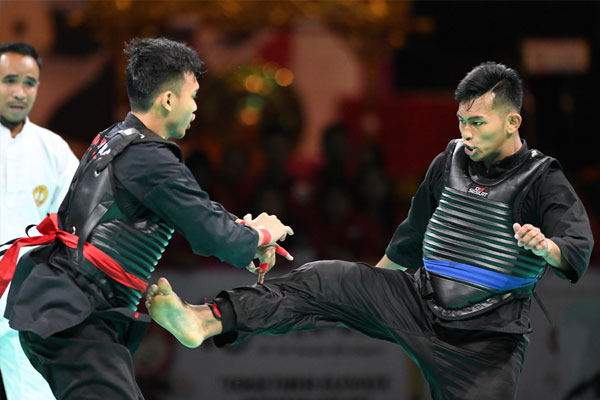Martial Arts Near Me
Pencak Silat
Pencak Silat is an ancient Indonesian martial art that encompasses a rich history, intricate techniques, and a compelling current status. Originating in the archipelago's diverse regions, Pencak Silat has evolved over centuries, blending cultural traditions while remaining true to its roots. This dynamic art form emphasizes self-defense, physical fitness, and spiritual growth, making it a significant part of Indonesian culture. In this article, we delve into the multifaceted world of Pencak Silat, delving into its historical origins, exploring its diverse techniques, and examining its present-day prominence.
The history of Pencak Silat traces back to Indonesia's early civilizations, dating as far back as the 6th century. Initially, it was used as a means of defense during tribal warfare. Over time, Pencak Silat grew to encompass spiritual and social dimensions, becoming an integral part of Indonesian culture. Passed down through generations, Pencak Silat gradually evolved, absorbing various influences from India, China, and the Malay Archipelago.
Techniques within Pencak Silat embody a seamless fusion of power, agility, and graceful movements as practitioners engage in combat. A remarkable aspect of Pencak Silat is its diversity, with each region and school having distinctive styles and approaches. These styles reflect the cultural nuances and geographic landscapes from which they emerged. For instance, West Javanese Silat adopts precise footwork and fluid arm movements, combining intricate techniques with agility, while Betawi Silat from Jakarta emphasizes traps, locks, and close-combat situations.

The techniques within Pencak Silat can be broadly categorized into various categories, encompassing strikes, kicks, throws, locks, and takedowns. Strikes involve the use of fists, elbows, knees, and open-handed techniques specifically designed to maximize impact and disable opponents efficiently. Kicks encompass a wide range, from low sweeping kicks to high, precise ones targeting vital areas. Throws are employed to off-balance opponents, using their own momentum against them. Locks, on the other hand, focus on joint manipulation and immobilization, enabling control over opponents. Lastly, takedowns emphasize the art of bringing an opponent to the ground, facilitating advantageous positions for further combat or defense.
The current status of Pencak Silat reflects its enduring significance in Indonesian society. It is considered both a traditional martial art and a competitive sport, with regional, national, and international competitions held regularly. The Indonesian Pencak Silat Association (IPSI) serves as the governing body, overseeing the development and promotion of the art. In recent years, Pencak Silat has gained global recognition, with the International Pencak Silat Federation (Persilat) established to unify various national organizations.
Pencak Silat's prominence on the international stage is evident through its inclusion in major multi-sport events, such as the Southeast Asian Games and the Asian Games. This increased visibility has allowed the art to flourish beyond its traditional roots, exposing a wider audience to its cultural and physical intricacies. Furthermore, Pencak Silat has found its way into the realms of popular culture, with appearances in movies and television series showcasing its mesmerizing techniques.
While Pencak Silat has experienced widespread recognition, it still embodies its inherent spiritual aspects. Embedded within the art form are elements of mysticism, meditation, and philosophy. Some practitioners engage in spiritual practices to deepen their understanding of Pencak Silat, using it as a platform for personal growth and self-discovery. These spiritual dimensions elevate Pencak Silat beyond mere physicality, emphasizing the importance of the mind-body connection and inner harmony.
Pencak Silat stands as an embodiment of Indonesia's rich cultural heritage, blending history, techniques, and a contemporary presence. Its roots reach deep into the past, adapting and evolving while retaining its core values. The dynamic techniques within Pencak Silat showcase the artistry and power that practitioners exude in combat. Present-day prominence, marked by international competitions and media exposure, has propelled Pencak Silat to new heights. However, its spiritual dimensions ensure that Pencak Silat is more than just a fighting art, offering a profound journey of self-discovery and personal growth to those who embrace it.